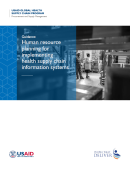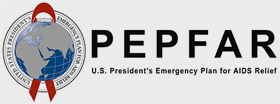The operationalization of our Management Information System (MIS) work is spearheaded by the GHSC-PSM Health System Strengthening (HSS) MIS team. The team provides guidance, coordination across stakeholders, and direct technical assistance to support supply chain information systems that allow for evidenced-based decision making, data-driven reporting and visualization, and interoperability across related systems. The team's approach to MIS development and support is based on industry best practices and sustainable solutions that best meet the context and needs of supported countries and their healthcare supply chains.
The HSS MIS team also orchestrates the MIS working group, which offers relevant guidance towards robust, sustainable, and digitally enabled country supply chains. The working group comes together to share in-country lessons learned in planning, implementing, and maintaining information systems for healthcare systems within the GHSC-PSM project.
Information sharing sessions have previously included:
- eLMIS Software Provider Presentations
- Country Field Office Presentations
- COVID-19 Software Provider tools Presentations




